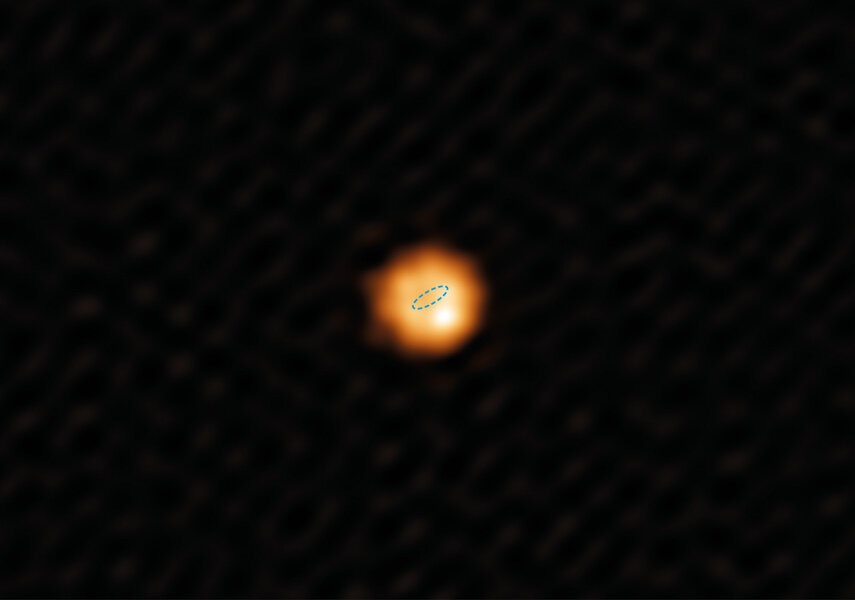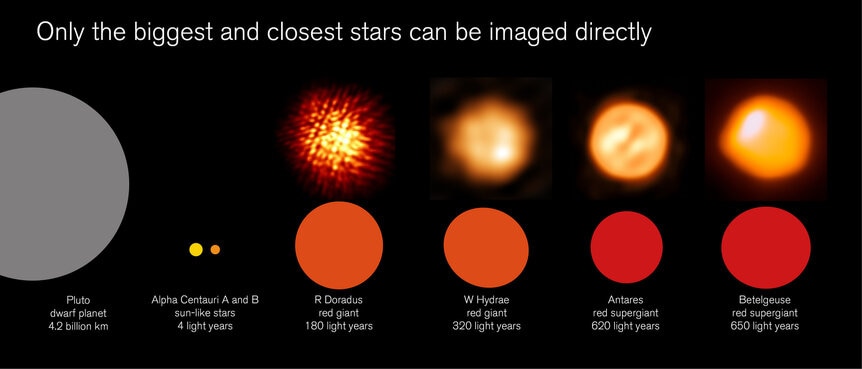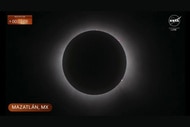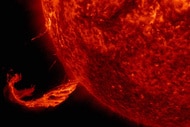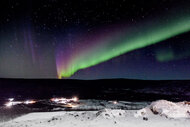Create a free profile to get unlimited access to exclusive videos, sweepstakes, and more!
A nearby star walks over the Sun's grave
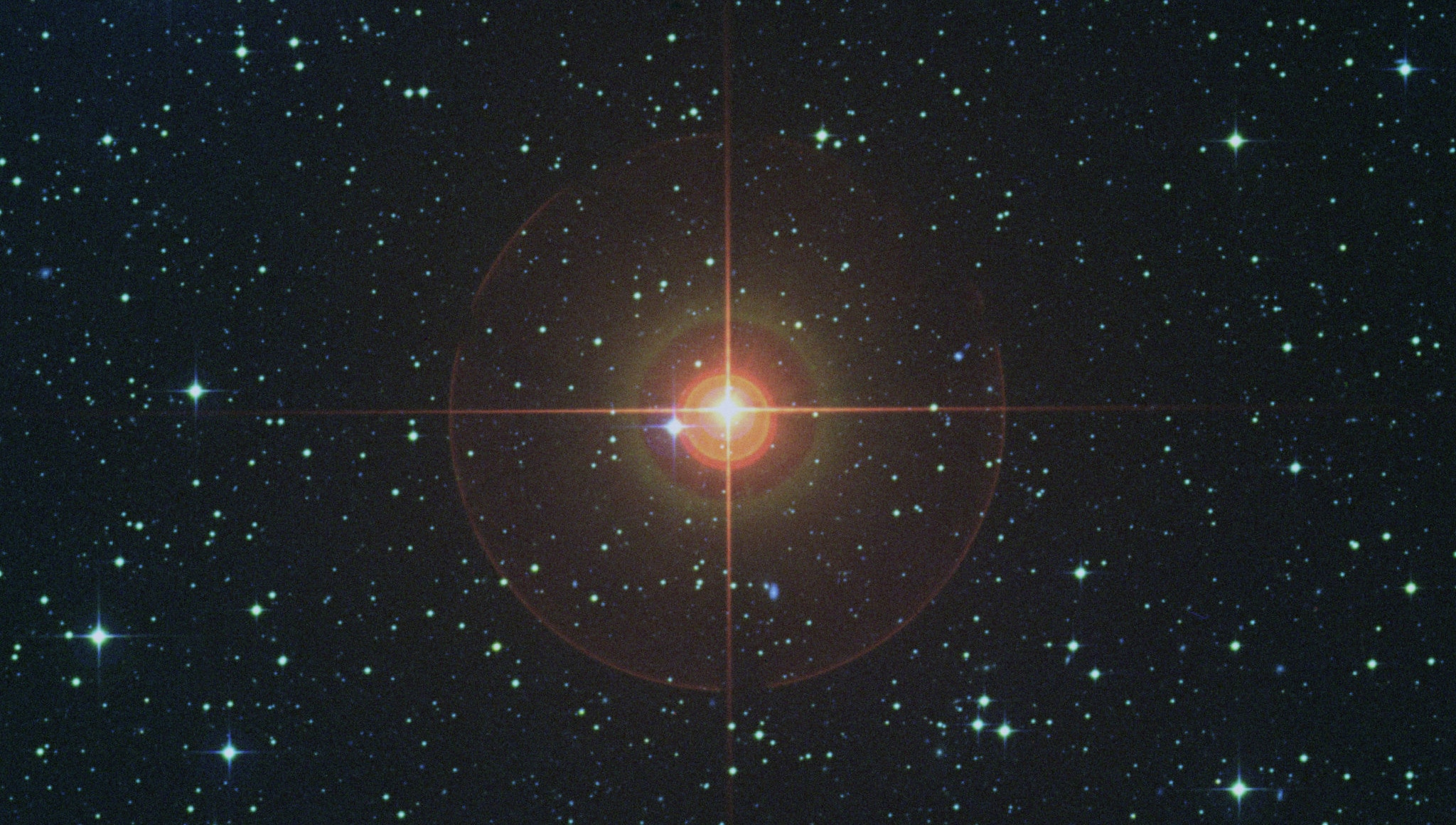
The Sun is approaching being a middle-aged star.
Literally: It's been shining for about 4.6 billion years, merrily fusing hydrogen into helium in its core to generate the colossal amounts of energy that it sends into space, and has roughly six billion more to go before things head downhill.
Around that time, it'll run out of available hydrogen in its core. The core will be mostly helium (astronomers refer to it as "ash," which is poetic; it's the remains of the fusion process and collects, unfused, in the center): small, dense, and fiercely hot. Its own gravity will cause it to contract and heat up further, and it'll get so hot that hydrogen around it will start to fuse in a thin shell. This generates extra energy, and when you add energy to a gas it expands (like a hot air balloon). So the Sun will swell up, doubling in size.
But over time, the helium that results from the shell fusion of hydrogen piles up. The core get squeezed even more, and after about 700 million years — when it's around seven billion years old — the core will become degenerate. This is a bizarre state where the matter is ruled by very strange quantum mechanical laws. One important aspect is that as you add mass to degenerate matter, it actually shrinks, the opposite of what you might expect. And mass is most certainly being added to the core as more helium is made around it. That makes it heat up, more and more …
The outer layers of the Sun will expand again. But this time there's a lot more energy, so the Sun gets a lot bigger: It'll bloat up to 100–150 times its current size, inflating to a whopping 150 million kilometers in diameter or more. Paradoxically, the outer layers cool when they expand, shifting from emitting mostly white light to red. Ruddy and huge, we call a star like this a red giant.
What will the Sun look like when this happens?
This. It'll look like this:
That is the star W Hydrae, a bloated red giant a little over 300 light-years away. That shot is a direct image, a real picture of the disk of the star taken using ALMA, the Atacama Large Millimeter/submillimeter Array, a telescope in Chile that observes light far outside the range of the human eye. It looks at wavelengths of about a millimeter (hence the name), a thousand times the wavelength of the reddest light you can see. These kinds of stars put out plenty of light at that wavelength, so ALMA is an excellent tool to observe them.
Moreover, ALMA uses several dishes spread out over a huge area and combines their power, essentially acting as a single dish many kilometers across. This gives it incredibly acute vision, the ability to resolve phenomenally small objects. And even though W Hydrae is physically big, at a distance of over three quadrillion kilometers its apparent size is teeny. You need something like ALMA to be able to see it as more than a dot.
W Hydrae is a pretty interesting star. It has a mass about equal to the Sun's, but it's much older. It's already reached the point where it's run out of hydrogen fuel and swollen up to incredible size. In the image above, the dashed ellipse represents the orbit of the Earth! W Hydrae is twice that size, 600 million kilometers across. It's a behemoth.
On the other hand, it's hardly there at all. The outer layers of the star have expanded so much that their density has dropped enormously. Even if you were physically inside the star, just below that visible "surface," there are so few atoms per cubic centimeter it would be like being inside a vacuum. A very hot vacuum.
Actually, that's one thing that's so very interesting about this image. Astronomers expected the outer part to be pretty smooth, but in fact you can see several bright spots there. These are hot spots, including that very bright one in the lower right. It's not clear what's causing this. It might be shock waves inside the star created by magnetism and other processes, though the brightness is pretty high even for that. It's possible the star was flaring, much like the Sun does. This happens when tangled magnetic field lines suddenly released their stored energy (I like to think of that as having a bag full of mousetraps, then snapping one; it jolts hard, which then releases the ones next to it, which jolt and release the next ones, and so on, and you suddenly have a lot of energy trying to escape all at once).
Understanding this is why the image was taken; shock waves in the outer atmosphere help astronomers understand the physical conditions inside the star, including the chemical composition of the material and how it's moving. These are critical in understanding how stars behave as they do. That's good to know scientifically, of course, but given this star is a glimpse into the Sun's future, it goes from being merely (merely! ha!) scientific to quite personal.
Especially since W Hydrae is bigger than Earth's orbit. It's not too hard to see why this is really personal*.
It's fortunate that W Hydrae is so close to us. That makes its apparent size big enough to see, and only a handful of stars are in that category right now. Even then it takes sophisticated tech to image them. But we're getting better at this, and can make telescope arrays that are pretty big. I imagine in the future we'll be able to do this in space, and have truly ginormous arrays, maybe millions of kilometers across! Think of what we'll be able to see then.
We just have to hurry. In a few billion years our own star will make building something like that a lot trickier.
* I'll note that as a star like this ages, it loses a lot of mass via a solar wind, enough that it'll actually weaken its own gravity. The orbits of the Earth and other planets will slowly expand too as this happens, and our orbit may get big enough to avoid being swallowed by the Sun as it expands. Venus might as well, but it's hard to say. Mercury is a goner for sure.
[P.S. Not to plug my own stuff, but to plug my own stuff: I wrote a chapter in my book Death from the Skies! all about the future of the Sun, which has a lot more details and a timeline of events right up to when the Sun sheds its mortal coil. Find out what discerning bookseller can trade it to you for money!]
